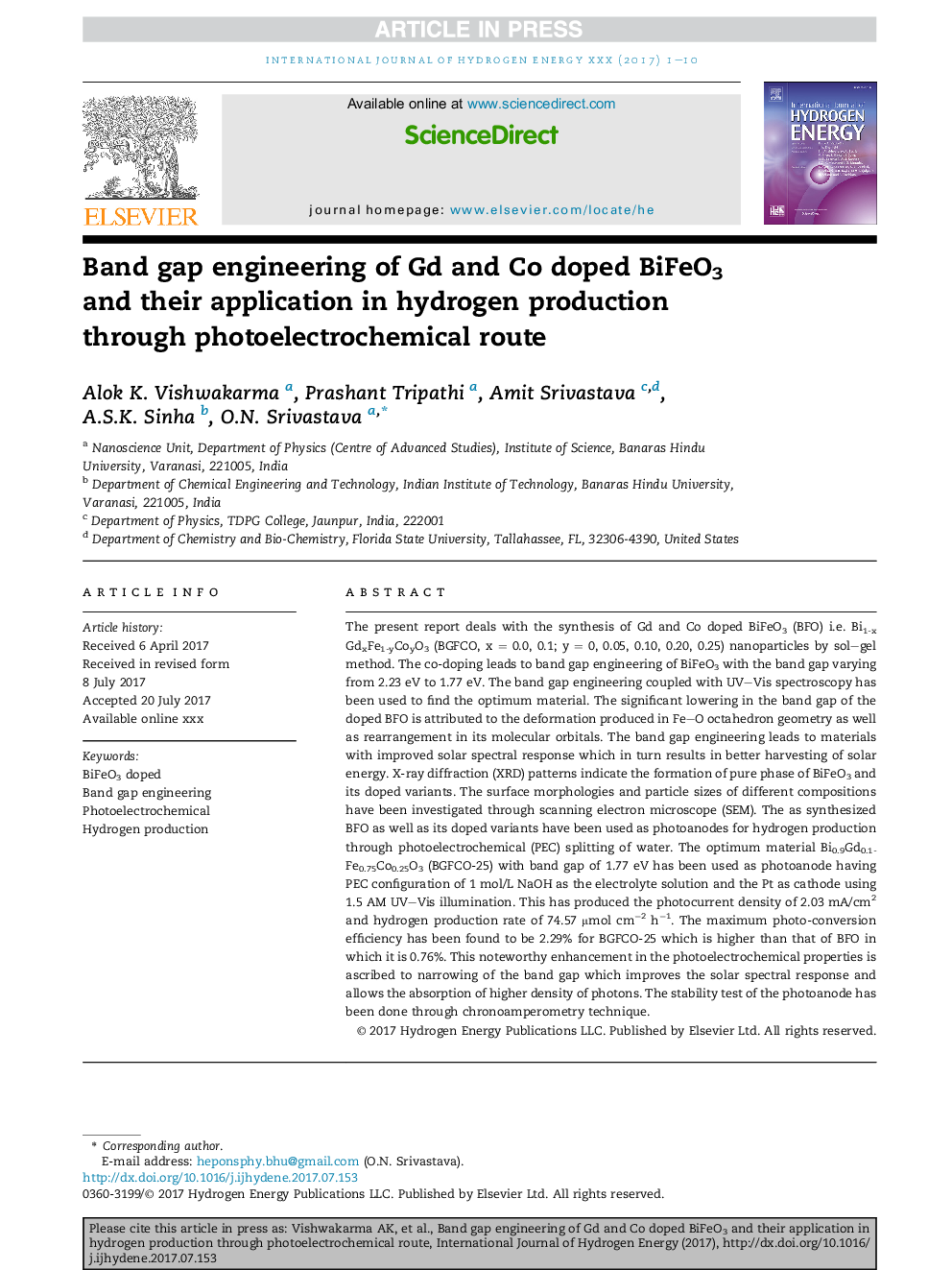| Article ID | Journal | Published Year | Pages | File Type |
|---|---|---|---|---|
| 5145255 | International Journal of Hydrogen Energy | 2017 | 10 Pages |
Abstract
The present report deals with the synthesis of Gd and Co doped BiFeO3 (BFO) to Bi1-xGdxFe1-yCoyO3 (BGFCO, x = 0.0, 0.1; y = 0, 0.05, 0.10, 0.20, 0.25) nanoparticles by sol-gel method. The co-doping leads to band gap engineering of BiFeO3 with the band gap varying from 2.23 eV to 1.77 eV. The band gap engineering leads to materials with improved solar spectral response which in turn results in better harvesting of solar energy. X-ray diffraction (XRD) patterns indicate the formation of pure phase of BiFeO3 and its doped variants. The surface morphologies and particle size of different compositions were investigated through scanning electron microscope (SEM). The as synthesized BFO as well as its doped variants have been used as photoanodes for hydrogen production through photoelectrochemical (PEC) splitting of water. The optimum material Bi0.9Gd0.1Fe0.75Co0.25O3 (BGFCO-25) with band gap of 1.77 eV has been used as photoanode having PEC configuration of 1 mol/L NaOH as the electrolyte solution and the Pt as cathode using 1.5 AM UV-Vis illumination. This has produced the photocurrent density of 2.03 mA/cm2 and hydrogen production rate of 74.57 μmol cmâ2 hâ1. The maximum photo-conversion efficiency has been found to be 2.29% for BGFCO-25 which is higher than that of BFO in which it is 0.76%.298
Related Topics
Physical Sciences and Engineering
Chemistry
Electrochemistry
Authors
Alok K. Vishwakarma, Prashant Tripathi, Amit Srivastava, A.S.K. Sinha, O.N. Srivastava,
